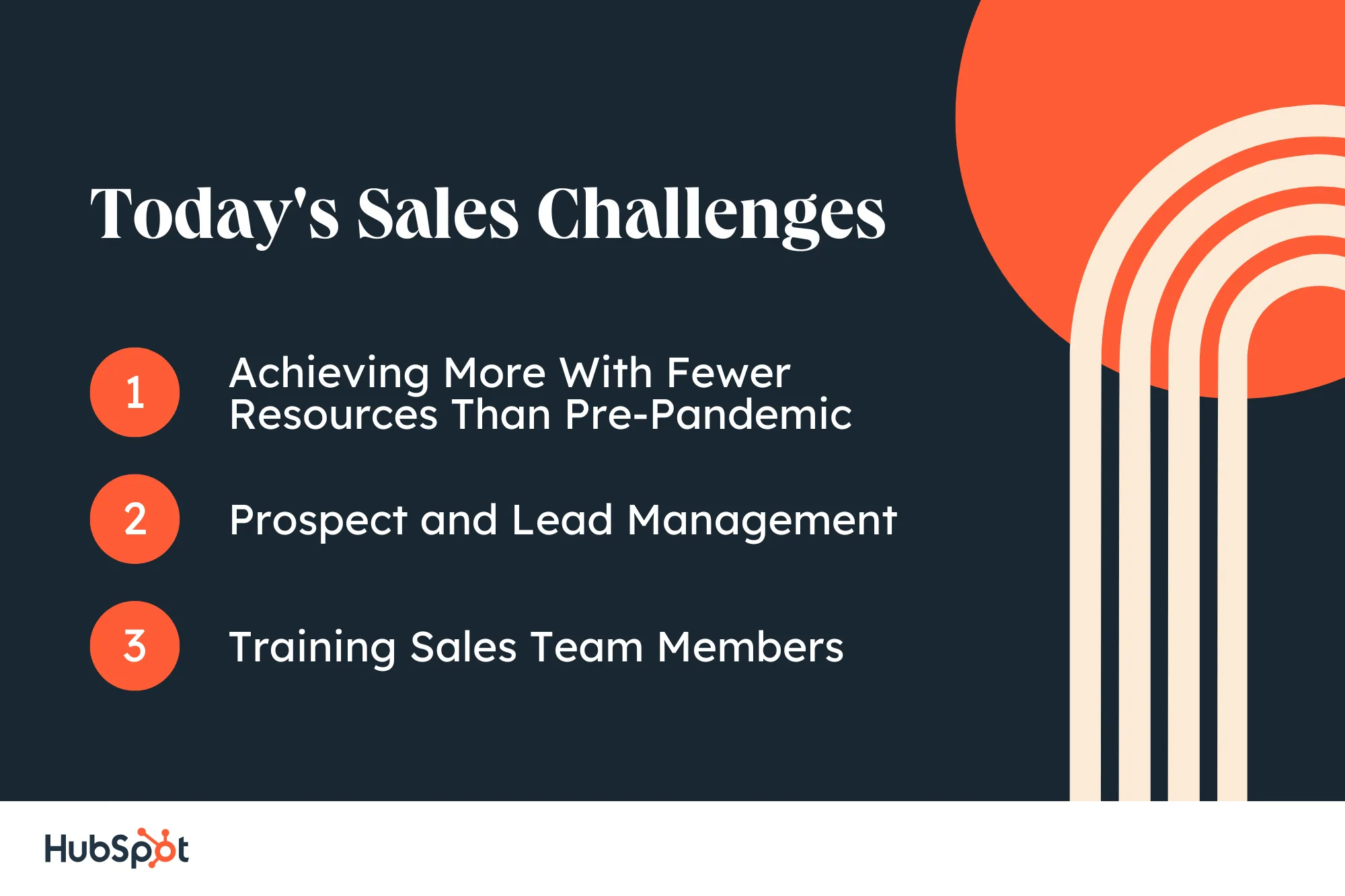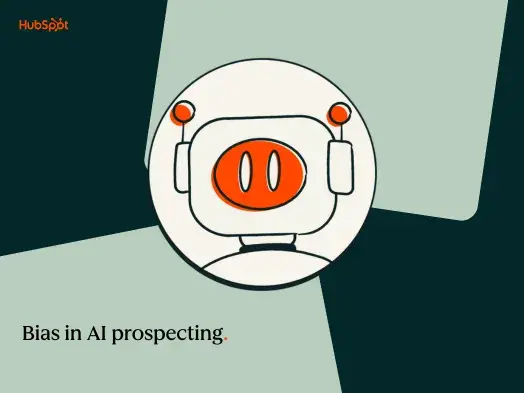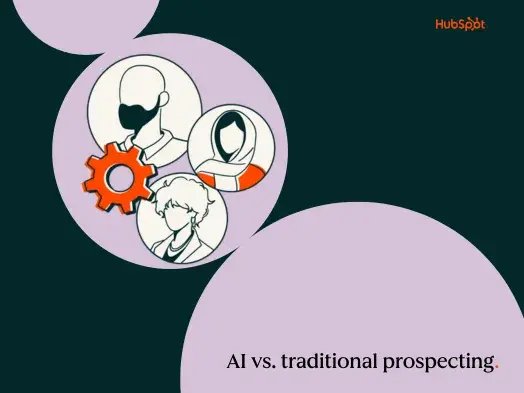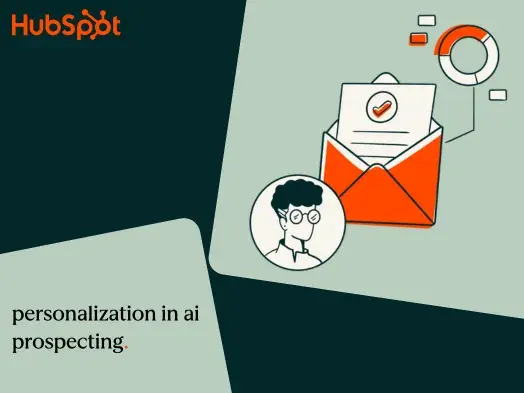Table of Contents
- What is sales enablement?
- Challenges in Today’s Sales Environment (and How AI Can Help)
- How Sales Teams Currently Use AI
- How AI Can Refine Sales Enablement Strategies
More and more organizations are now turning to AI as part of their sales enablement efforts. According to HubSpot’s State of AI survey, sales teams use it to:
- Automate repetitive, time-consuming tasks like sending emails and updating records.
- Gain access to insights from the market and/or internal resources.
- Creating cold outreach messages.
Challenges in Today’s Sales Ecosystem (and How AI Can Help)

Achieving More With Fewer Resources Than Pre-Pandemic
With layoffs sweeping across the globe, many sales specialists feel concerned about their jobs and pressured to achieve more with fewer resources. Gartner’s Sales Practice VP Analyst, Doug Bushée, goes even further by calling redundancies “a motivational nightmare for sellers.”
Many sales leaders leverage automation to help teams reach their revenue and lead generation targets.
How AI Can Help
One of the most powerful capabilities of AI in sales is handling time-consuming, manual tasks. This is true for 87% of workers who took part in our State of AI Report. Moreover, 79% of salespeople using automation say they can now dedicate more time to actively selling.
Among others, solutions like ChatSpot allow sales reps to automatically set up new CRM profiles, create new lead segments, generate data from reports, and even send follow-up messages on their behalf.
.webp)
Prospect and Lead Management
A steady stream of leads keeps businesses afloat. Even if one customer leaves, there are more prospects who can replace them. Naturally, this will only happen if you have an effective prospect and lead management strategy. This strategy will help you target the right leads and improve your chances of converting them into paying customers.
That said, prospecting and lead management can be both complex and time-consuming. No wonder so many salespeople turn to AI to manage their lead pipeline. According to recent HubSpot research, 85% of salespeople say it makes prospecting better.
How AI Can Help
By using AI, sales teams no longer have to enter data manually as it’s done automatically. This reduces human error and saves time that employees can spend on selling. AI tools like ChatSpot also enable voice search.
Instead of updating data by hand or checking how many leads there are in the pipeline, they can ask, “How many contacts do I have assigned today?” They can also update a lead record with additional information, for example, “Add a phone number to Mark Stanley with a note to call on Tuesday as he’ll be in New York.”
Additionally, it helps with lead scoring. By analyzing hundreds of deals closed previously, it identifies prospects/leads that have the highest chance of converting into clients, allowing sales to focus on them.
Training Sales Team Members
Training has always been among the top challenges for sales departments. Bringing new employees up to speed, upskilling or reskilling existing staff, and handling scheduling conflicts for cross-team training are just a few complexities.
Many companies have also shifted to remote or hybrid operations. This further complicates the training process and makes it hard for sales managers to build rapport with their staff.
Moreover, due to limited time, sales leaders can’t always audit or listen in on sales calls to provide ongoing feedback. Here’s where AI comes to the rescue.
How AI Can Help
Traditionally, new business managers listen to calls to analyze how well their team members perform. Often, they would join as a silent participant as the conversation took place. With AI, managers can now assess conversations at scale.
These tools can record, transcribe, and analyze all the sales calls and spot which ones performed best or worst. They can identify:
- How long the call lasted.
- What topics and features were discussed, and in which order.
- If the seller or lead mentioned pricing.
- The lead’s potential sentiment, based on the emotionally-saturated words they used.
The above information helps build a script with the highest chance of converting. It can also guide employee training and help sellers handle buyers’ worries and potential objections.
How Sales Teams Currently Use AI
Automating Manual Tasks
Before AI sales enablement tools, administrative work took up most of the sales team’s workweek. An assessment from 2021 estimated that dedicating 35-40% to actively selling and the remaining 60-65% to administrative work was a realistic goal.
Those who use AI in sales are already reporting significant improvements. Some of the mundane, time-consuming tasks that AI can handle include:
- Drafting and sending over documents, such as quotations, orders, and contracts.
- Creating sales reports and forecasts.
- Scheduling calls and sending follow-up messages to prospects.
- Running lead generation.
Relying on AI as a resourceful assistant allows sales reps to focus on the work people are best at. At the same time, it eliminates the risk of human errors caused by mental, physical, and emotional overload.
Gain Data-Driven Insights
AI can analyze massive volumes of data quickly and accurately. That’s why it comes in handy in sales forecasting. It provides a real-time overview of each transaction in the pipeline and identifies patterns that humans might miss.
This helps sales executives decide which deals to take further, pause, or give up on completely. As a result, businesses can avoid costly mistakes and make better plans.
Additionally, AI can spot low-value activities that take too much of salespeople's time. Automating or eliminating them will grant sales executives more opportunities to focus on what matters — closing deals.
Write Prospect Outreach Messages
According to Rain Group, 80% of people prefer to be contacted via email. So it comes as no surprise that cold outreach is one of the most powerful ways to grow a business. However, it will only work if (a) you target the right prospects and (b) you write an email, which appeals to them, i.e., addresses their pain points.
Crafting the perfect message can be challenging as many don’t know what to write and how to catch prospects’ attention.
For this reason, it’s worth turning to an AI tool like HubSpot's AI content assistant. It uses OpenAI’s GPT model to create personalized email copy that drives engagement and results in conversions. Anyone on your team can come up with catchy emails in no time. Forget about writer’s block!
How AI Can Refine Sales Enablement Strategies
Keep your prospect lists clean and up-to-date.
Your prospects’ contact details can change, so checking them regularly is essential. It’s as important to enrich their profiles with the latest information. After all, the more accurately you understand the prospect’s circumstances and needs, the more likely you are to convert them.
Data maintenance can be easily done with AI solutions like ChatSpot. These tools keep the need for manual data handling at a bare minimum, de-duplicate records, and automatically update prospect information. Now, there's time for human-to-human communication and building connections.
Use AI for data enrichment.
Data enrichment is another way to boost your data’s quality and validity. It lets you import data from a third party directly into your CRM. As a result, you can build a more comprehensive understanding of prospects, leads, and existing clients.
Traditionally, it would be up to sales reps to manually input any supplemental information to the right profiles. However, this can now be done by AI. An AI tool like ChatSpot can import a spreadsheet, recognize each customer or lead, and link them with the right CRM profile.
On top of gaining more information on existing data categories, you can learn about new contexts. For example, you can import AI transcriptions of discovery calls and enrich your CRM with qualitative data, including sentiment.
This brings us to another AI sales enablement capability.
Introduce more effective lead scoring.
Your sales team’s time is precious (literally). The more time they spend selling, the more profit they can generate for the business.
However, the effectiveness of their efforts depends not only on their talent but also on the quality of the leads they deal with. And the truth is, not every lead in your CRM should become a customer.
AI can help sales identify leads or prospects that are most likely to buy from you. How so? AI algorithms analyze tons of past data (including buying behavior, sentiment, and communication) to identify patterns that indicate a high or low likelihood of making a sale.
This allows salespeople to better optimize their time and only focus on leads with a high lead score.
Create training programs for sales newbies.
It can take up to eight months for a new employee to become fully productive. The better the onboarding, the faster you’ll be able to bring your sales newbies up to speed. AI tools can help you create a training program for new starters. Here are a few ideas on how you can use it:
- Listening to sales calls. AI tools analyze calls held with prospects and recommend how to improve the conversation to close a sale.
- On-demand learning. As more people work remotely, it’s vital that they’re able to learn where and when they prefer.
- Creating educational materials. AI can write educational content based on the insights you provide it with. You can build an entire knowledge base dedicated to salespeople.
- Predicting training needs. AI can help you predict what training your new hires will benefit from and what extra training they might need.
Use AI to pivot to new sales strategies faster.
Many AI solutions use predictive modeling to detect changes and patterns in the lead’s behavior or responses. These tools can notify you when they spot a change in lead sentiment or repetitive concerns across your prospect base.
Learning about an unraveling issue or a new market need lets your sales reps adjust their communication strategy promptly. Say that your seller finds out a competitor had a major issue, like a data breach. They can ask the AI content assistant to craft an email that informs leads that your company treats data security as a top priority.
This is known as the “Sense → Response” feedback loop, which has — until recently — been used solely by software engineers. Now, these dynamic response capabilities power the most tech-savvy sales teams out there.
On top of the above, AI tools can also:
- Write personalized sales collateral, including emails and sales call pitches.
- Keep your CRM organized and up-to-date.
- Support your training programs.
- Help you pivot to new sales strategies based on the latest data.
Ready to see how AI can help your sales team reach their goals? Get started with HubSpot’s AI tools for free.
Getting Started
In these uncertain and highly-competitive times, AI can be a true life-saver for sales departments. It’s a perfect solution for building sales pipelines, as it helps you build, organize, and keep your prospect lists up-to-date.
With AI lead scoring, sales reps can focus their time and efforts on those with the highest chance of converting. This means your team can achieve higher results, even with a smaller team.
Artificial Intelligence









![13 Ways AI Can Benefit Your Business [+ New Data and Gen AI Prompts]](https://53.fs1.hubspotusercontent-na1.net/hubfs/53/benefits-of-business-in-ai-1-20241113-8880073.webp)


